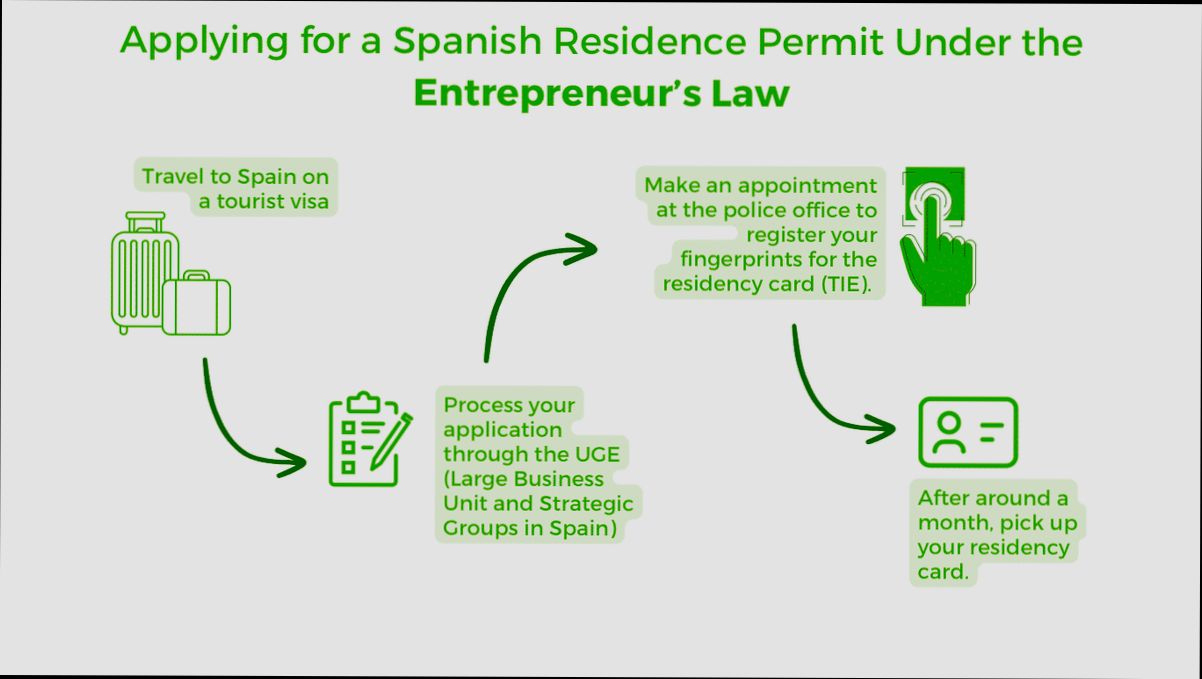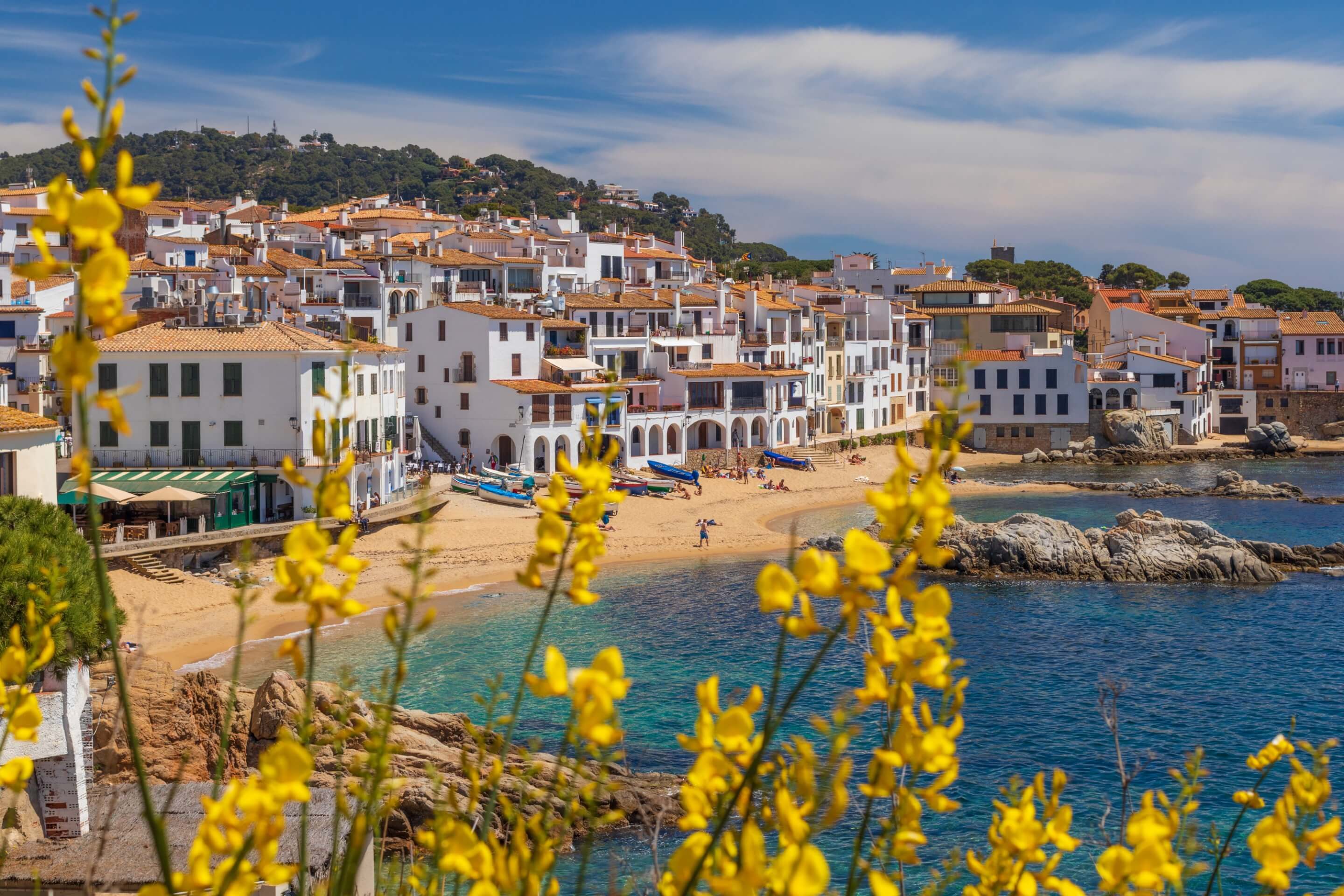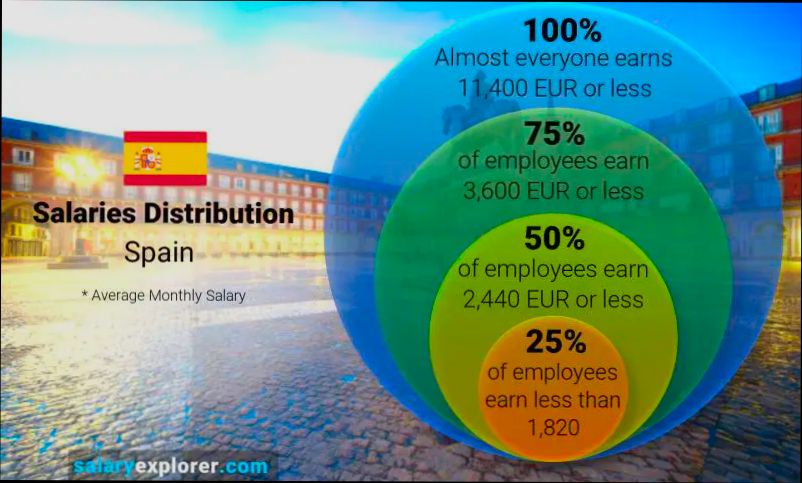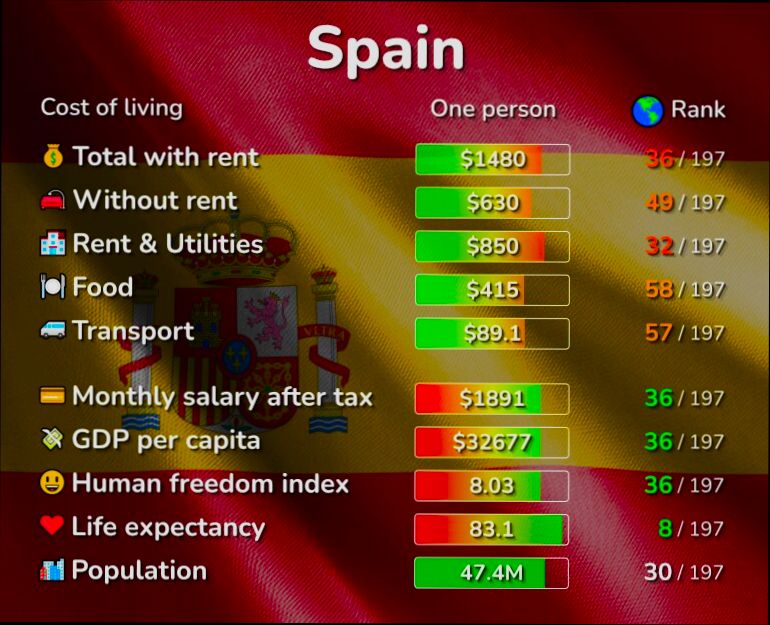- Eligibility Criteria for Spanish Residency
- Types of Spanish Residency: A Comparative Analysis
- Required Documentation for Residency Application
- Step-by-Step Application Process for Spanish Residency
- Processing Times: What to Expect
- Common Challenges and How to Overcome Them
- Statistics on Spanish Residency Applications
- Fees and Financial Considerations
- Living in Spain: A Guide for New Residents
- Renewal and Permanent Residency Options
- Key Resources for Aspiring Spanish Residents
What’s the process for getting Spanish residency? Diving into the world of Spanish residency can feel a bit overwhelming at first, but it’s totally manageable if you break it down. Spain offers various routes depending on your situation—whether you’re a digital nomad, a retiree, or looking to start a new life. For example, if you’re an EU citizen, you’ll have an easier time navigating the system compared to non-EU nationals, who may need to jump through more hoops.
The journey typically kicks off with identifying which residency visa fits your needs. You might opt for a work visa, student visa, or even a non-lucrative visa if you have ample savings. After choosing the appropriate visa, you’ll need to gather some important paperwork, like proof of financial resources and health insurance. Then there’s the application process itself, usually involving both online forms and physical documents submitted at a Spanish consulate or embassy. Each step has its nuances, so people often find themselves juggling translations, appointment schedules, and legalities.
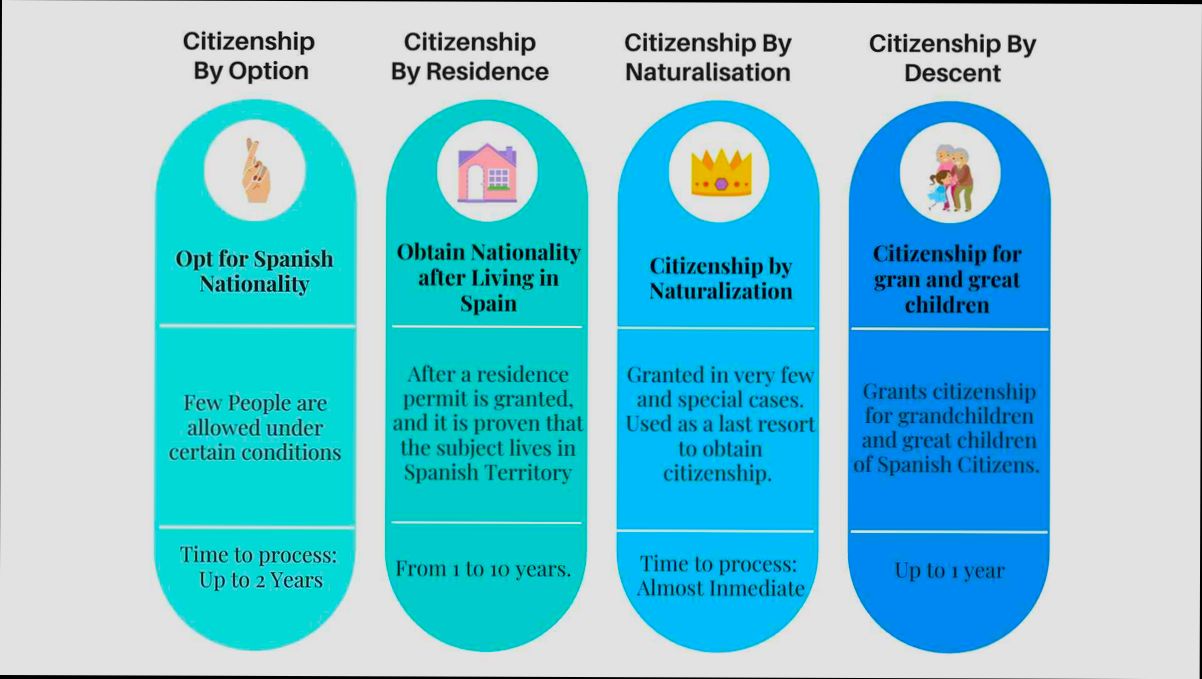
Understanding Spanish Residency: An Overview
Getting Spanish residency might sound complicated, but it’s not as scary as it seems! Let’s break it down. Basically, there are several types of residency permits you can apply for, depending on your situation.
| Type of Residency | Who it’s for | Key Requirements |
|---|---|---|
Temporary Residency | Non-EU Citizens | Proof of employment or sufficient funds |
Long-Term Residency | Non-EU Citizens | Five years of legal residency |
Golden Visa | Investors | Invest at least €500,000 in real estate |
EU Residency | EU Citizens | Just show proof of employment or education |
Now, let’s talk specifics. If you’re an EU citizen, all you really need is to register with the local authorities. It’s simple! Just gather your documentation about employment, health insurance, and a place to live.
For folks outside the EU, it gets a bit trickier. You’ll often need to secure a job before coming or show you can support yourself financially. It’s a good idea to have all your documents in order because you might need to show proof of your financial stability, like bank statements.
And here’s where platforms like Residoora come into play! They offer tools for real estate investors, helping you find the best properties and navigate through the residency process. For example, with the Golden Visa, they can analyze which properties meet the €500,000 investment requirement, making your search easier!
A few stats to keep in mind: in 2022, Spain issued over 30,000 Golden Visas! This reflects how appealing Spanish residency is for investors and non-EU nationals.
In conclusion, whether you’re looking to soak up the sun in a villa or enjoy tapas in the city, understanding the residency process is the first step. Utilize tools like Residoora to help you along the way, and you’ll be living your Spanish dream in no time!
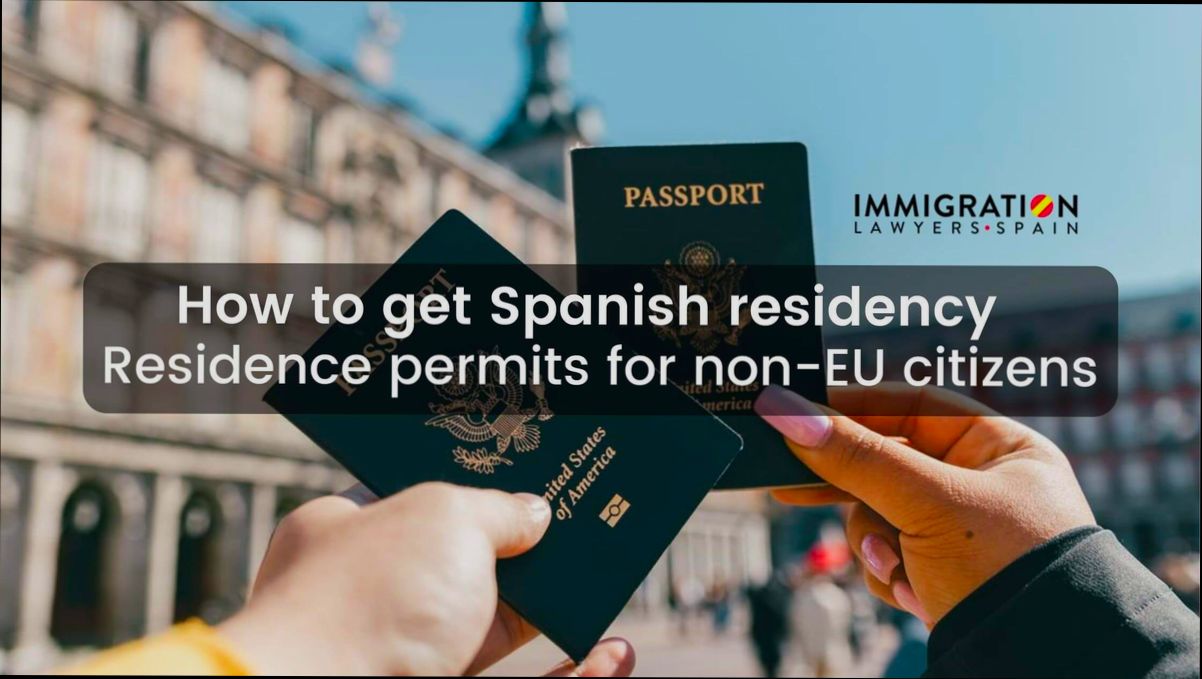
Eligibility Criteria for Spanish Residency
If you’re dreaming of living the Spanish lifestyle, it’s important to know if you meet the eligibility criteria for residency. Let’s break it down!
1. Financial Stability
To qualify for most residency permits, you need to show that you can financially support yourself. This typically means having a stable income or sufficient savings. Here’s a quick rundown on what you might need:
| Type of Residency | Minimum Monthly Income |
|---|---|
Golden Visa | €2,130 (about $2,300) |
Non-Lucrative Visa | €2,130 + 100% for each additional family member |
2. Health Insurance
You’ll need to have valid health insurance that covers you in Spain. This can be either public or private, as long as it meets the minimum requirements. It’s essential to make sure that your insurance will cover you for the entire duration of your stay.
3. Clean Criminal Record
Spain wants to ensure its communities are safe. You’ll need a criminal background check from your home country (and from Spain if you’ve lived there before) to demonstrate that you have no serious criminal convictions. Most countries issue background checks that are valid for 3-6 months, so stay on top of this!
4. Age & Residency Type
Your age can influence the type of residency application you’ll need. Most routes are open to adults, but there are specific categories, like student visas, that target younger individuals:
Golden Visa: For property investors, no age limit!
Student Visa: Targeted towards those under 30.
5. Language Requirements
While not mandatory, speaking Spanish can be a huge plus! Some residency paths may require you to prove a basic understanding of the language, so brushing up on your español is a smart move.
6. Employment Status
If you’re planning to work in Spain, you’ll need a work permit. The good news is, if you’re a non-EU citizen with a job offer, the employer usually helps you apply for the necessary permits.
Example: Using AI Platforms
Platforms like Residoora can not only help you find that perfect home but also guide you through the residency process. They provide useful insights on property investments in Spain that benefit your residency application, especially if you aim for the Golden Visa route.
In summary, while the eligibility criteria for Spanish residency can seem vast, breaking it down like this can help. Remember, preparation is key! Don’t hesitate to seek assistance from platforms designed to simplify the process.
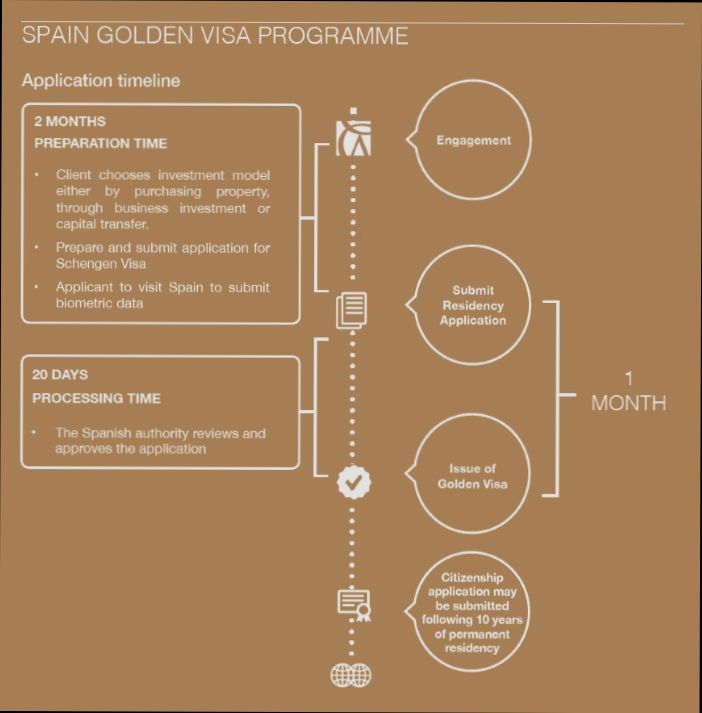
Types of Spanish Residency: A Comparative Analysis
When it comes to establishing your home in sunny Spain, the first big step is figuring out what type of residency fits your lifestyle. Let’s break down the main types of Spanish residency that you can get, so you’re not left scratching your head.
| Residency Type | Eligibility | Duration | Key Benefits |
|---|---|---|---|
EU Citizen Residency | Anyone from EU/EEA countries | Permanent (after 5 years) | Easy access to work and travel |
Non-EU Residency (Golden Visa) | Investing €500,000+ in real estate | Initial 2 years, renewable | Quick process and no minimum stay |
Non-EU Work Visa | Job offer from a Spanish employer | Initial 1 year, renewable | Ability to work legally |
Student Visa | Enrollment in a recognized educational institution | Depends on the length of your studies | Part-time work allowed |
As you can see, finding the right type depends on your situation. For instance, if you plan to retire and enjoy the Spanish sun without putting down roots, the EU residency might be the way to go. On the other hand, if you’re looking to dive into real estate, the Golden Visa is a fantastic option. Did you know that as of 2023, nearly 10,000 Golden Visas were issued? That’s quite popular!
Platforms like Residoora are lifesavers for investors navigating this. They offer intuitive tools and resources to help you evaluate properties while ensuring you collect all necessary paperwork for that Golden Visa.
It’s also worth mentioning that if you’re pursuing education in Spain, the student visa allows some flexibility. You can work part-time, making it a great way to gain experience while soaking up the local culture.
Whether you’re planning to invest, study, or explore permanent residency, understanding these options is crucial. Just think about what you want to achieve in Spain, and choose the residency that gets you there!
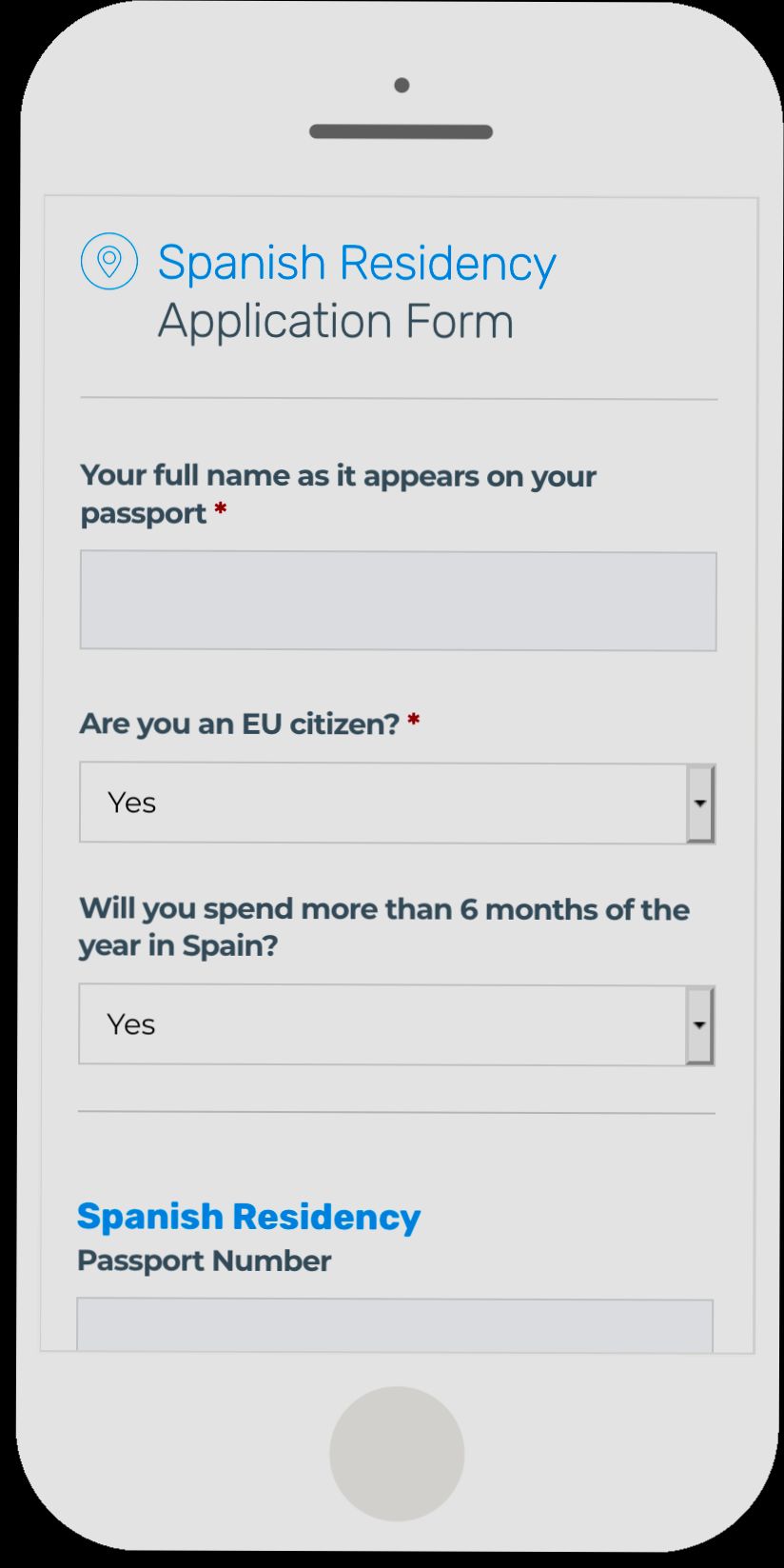
Required Documentation for Residency Application
When you’re ready to dive into the Spanish residency process, you’ve got to gather some important documents. Don’t sweat it, though—I’ve got the lowdown for you! Here’s what you typically need:
| Document | Description | Notes |
|---|---|---|
Valid Passport | A passport that’s valid for at least a year. | Make sure it’s not expired! |
Proof of Address | Utility bill or a lease contract in your name. | This shows you plan to live in Spain. |
Health Insurance | Private health insurance that covers you in Spain. | No public services? No problem! |
Financial Means | Bank statements or proof of income showing you can support yourself. | Think around €1,000 monthly. |
Criminal Record Certificate | A document proving you have no serious criminal record. | From your home country, translated into Spanish. |
Application Forms | Completed residency application forms provided by Spanish authorities. | Get them from the consulate or online! |
When applying, a well-organized and complete application can make a difference. Did you know that successful applicants often have their documentation ready before starting the process? This can speed things up significantly!
Platforms like Residoora can simplify your journey by providing tailored real estate options and advice in two shakes! And if you’re looking to invest, they offer practical insights that’ll help make your residency a breeze.
So, knock out that paperwork, and you’ll be one step closer to calling Spain your new home!
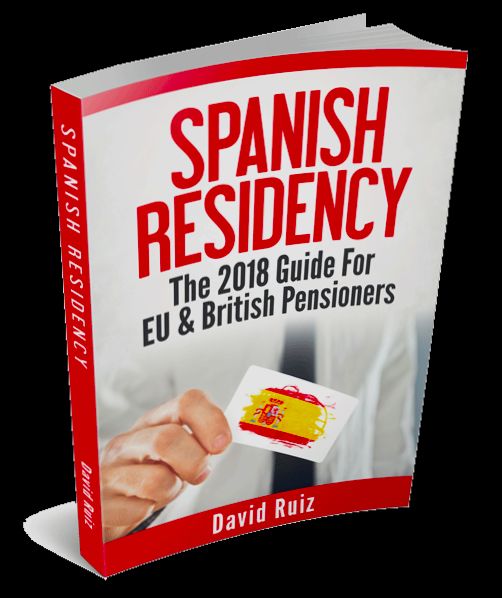
Step-by-Step Application Process for Spanish Residency
Ready to dive into the Spanish residency process? It can feel like a maze sometimes, but don’t sweat it! Here’s a straightforward guide to help you navigate through the steps.
1. Determine Your Residency Type
First things first, you need to decide what type of residency you’re gunning for. Are you an EU citizen or a non-EU citizen? Here’s a quick breakdown:
| Residency Type | Eligibility | Processing Time |
|---|---|---|
EU Citizens | Living or working in Spain for over 3 months | 1-2 months |
Non-EU Citizens | Investor Visa, Work Visa, Family Reunification, etc. | 2-4 months |
2. Gather Necessary Documentation
Once you’ve established your residency type, it’s time to gather your documents. Below is a list of the essentials:
Valid passport (make sure it won’t expire soon!)
Proof of health insurance coverage
Criminal background check
Proof of financial means (like bank statements)
Proof of address in Spain (you might need a rental agreement or something similar)
Don’t forget, specific types of residency might demand additional documents, so double-check!
3. Apply at the Relevant Consulate or Immigration Office
If you’re outside of Spain, head over to the nearest Spanish consulate. In Spain, you’ll deal with the Oficina de Extranjería. Make sure you fill out the right applications. For instance:
The Application for Residency Card (EX-01) for EU citizens.
The Non-Lucrative Visa Application for non-EU citizens.
Pro tip: Checking out platforms like Residoora can be a game-changer! They guide real estate investors in understanding the residency process and connecting with local experts. Trust me, it’s worth a look!
4. Pay Application Fees
Yep, there are fees. It varies depending on your residency type but expect to pay anywhere from €60 to €350. Make sure to keep your payment receipts; you’ll need them!
5. Attend the Interview (If Required)
Some applications might require an interview. Don’t stress! Just be ready to explain why you want to live in Spain and your plans while you’re there.
6. Receive Your Residency Approval
If all goes smoothly, congratulations! You’ve got your residency approved. You’ll receive a residency card, aka the Tarjeta de Residencia, which can take a few weeks to process.
7. Stay Informed on Renewals
Your residency isn’t a “set it and forget it” deal. Typically, it’s valid for 1-5 years, depending on your type. Keep your documents in order and be ready for renewals!
And there you have it! While it may seem overwhelming, breaking it down into steps makes it manageable. With diligent preparation, you could be living the Spanish dream sooner than you think!
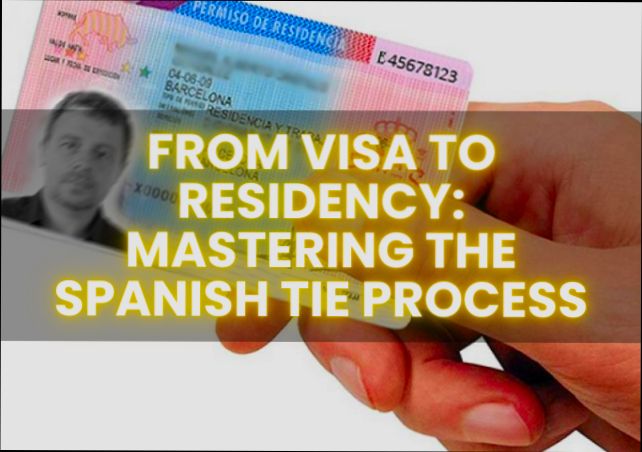
Processing Times: What to Expect
So, you’re on a quest to get Spanish residency? One of the biggest things you’ll grapple with is the processing time. Trust me, this can be a rollercoaster. Let’s break it down!
Visa Application Processing
Once you submit your visa application, you’ll usually hear back within 1 to 3 months. But it’s not all sunshine and rainbows; delays can happen, especially during peak seasons. If you’re applying from outside Spain, give it a bit more wiggle room. On average, folks say it takes around 8 to 12 weeks.
Example:
If you applied in June, you could expect to receive news by late August or early September.
Residence Permit Processing
If you’re already in Spain and applying for a residence permit, the timeline can vary quite a bit. Typically, you might wait anywhere from 2 to 6 months. However, once you submit all the required documents, you’re in the waiting game!
Quick Tip:
Keep an eye on the local government’s website or even use AI platforms like Residoora to monitor your application status. These tools can save you time and keep you informed!
Renewals and Extensions
Have you already got that shiny residency? Great! But don’t forget the renewals. Most residency cards need to be renewed every 2 to 5 years, depending on your situation. And guess what? It can take around 1 to 2 months for those renewals to process.
Processing Timeline Overview
| Type of Application | Estimated Processing Time |
|---|---|
Visa Application | 1 to 3 months |
Residence Permit | 2 to 6 months |
Renewals | 1 to 2 months |
Remember, every case is unique, so these times can shift based on your specific circumstances. Patience is key here, my friend! You’ll get there, just stay organized and proactive.
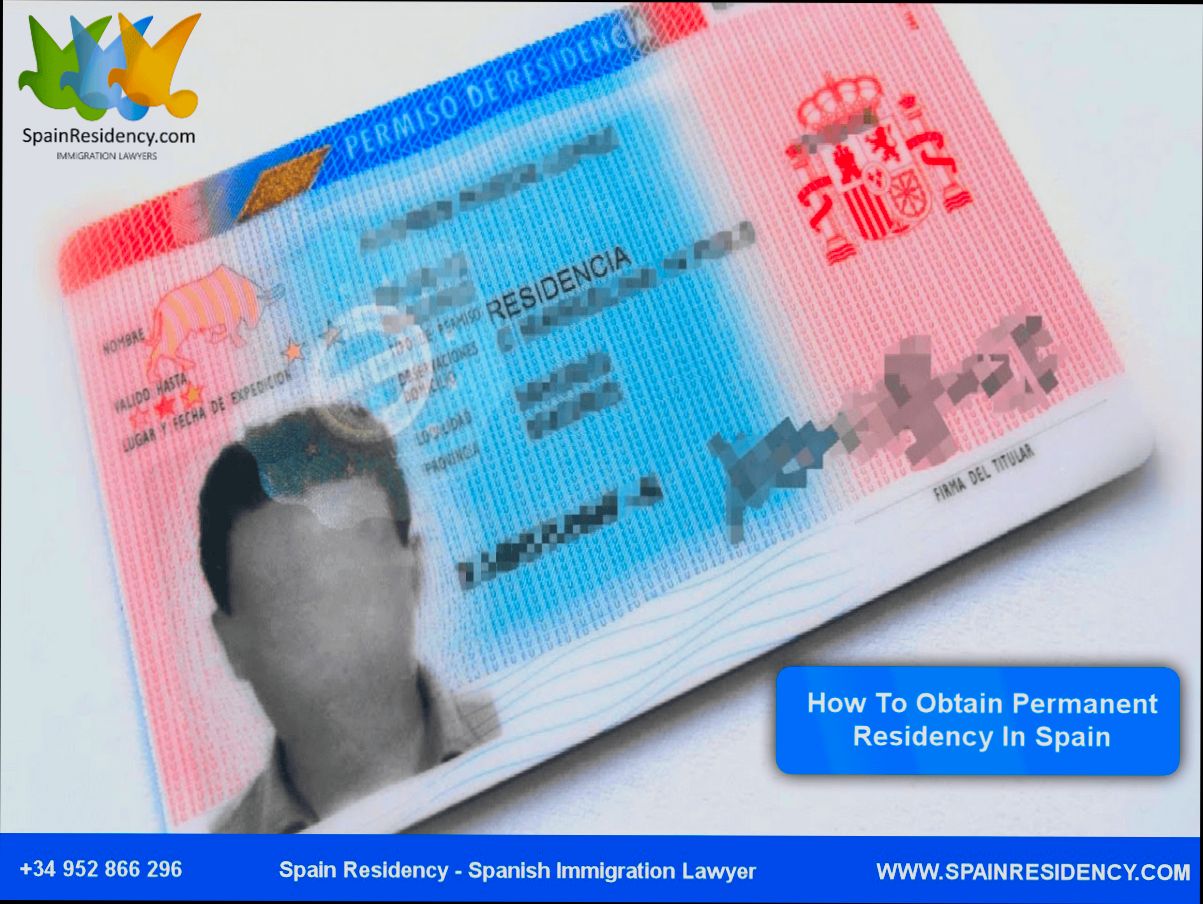
Common Challenges and How to Overcome Them
Embarking on the journey to get your Spanish residency can be thrilling, but let’s be real—it’s not all sunshine and tapas. Here are some common hurdles you might face, along with practical ways to tackle them.
1. Paperwork Overload
You’ll quickly discover that applying for residency in Spain involves a mountain of paperwork. We’re talking about everything from your passport to proof of income, and sometimes even a criminal background check. It can feel overwhelming.
Tip: Organize your documents in a binder or use digital tools to keep track. Platforms like Residoora can help streamline your process by offering tools to manage your documentation effectively.
2. Language Barriers
Unless you’re fluent in Spanish (props to you if you are!), dealing with government bureaucracy can be a challenge. Misunderstanding requirements or instructions could delay your application.
Tip: Consider hiring a bilingual professional or legal advisor who specializes in residency applications. You can find support in communities of expatriates or local forums where others share their experiences.
3. Proving Financial Stability
Spain requires proof that you can support yourself financially while living there. This can be tough, especially if your income is in foreign currency or irregular.
Tip: Use a financial advisor familiar with expat life to present your financial situation clearly. This could include bank statements, investment documents, or employment contracts. Showing you have funds readily available can smoothen the process.
4. Long Wait Times
Patience, my friend! The residency application process can drag on for months or even years. As of 2023, reports suggest applicants might wait up to 6 months or longer for a response in some regions.
Tip: Apply early. If you’re planning to move or visit Spain, get your application in as soon as possible. Meanwhile, consider temporary visas that allow you to stay while your residency is processed.
5. Understanding Visa Categories
There are various types of residency visas—work, family reunification, study, etc. Choosing the right one can be confusing and lead to further complications if you pick the wrong one.
Tip: Research thoroughly or consult a legal expert who can help you understand which visa fits your situation best. Sites like Residoora offer comprehensive guides that break down the details for each residency category.
Quick Reference Table
| Challenge | Solution |
|---|---|
Paperwork Overload | Organize with digital tools (e.g., Residoora) |
Language Barriers | Hire a bilingual advisor |
Proving Financial Stability | Consult a financial advisor |
Long Wait Times | Apply early |
Understanding Visa Categories | Consult a legal expert |
Remember, while challenges exist, there are also plenty of resources out there to help you navigate the process! You got this!
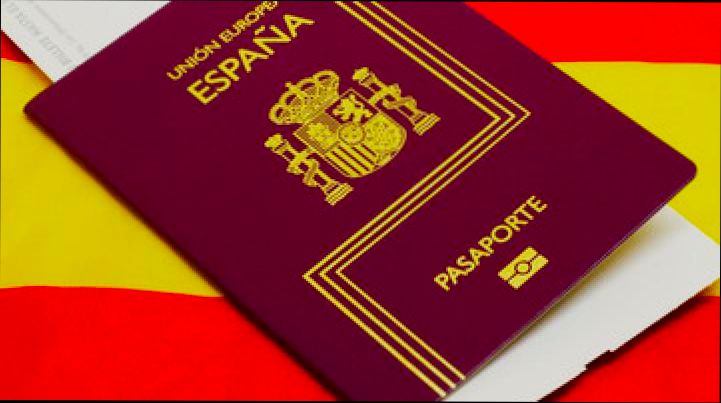
Statistics on Spanish Residency Applications
So, you’re interested in getting a Spanish residency? Well, you’re not alone! The number of people applying for residency in Spain has been on the rise. In fact, as of 2023, reports showed that there were over 100,000 residency applications processed each year! And that doesn’t even include the pending applications.
Breaking It Down: The Types of Residency
| Type of Residency | Percentage of Applications |
|---|---|
Golden Visa (for investors) | 40% |
Work Visa | 30% |
Student Visa | 20% |
Non-Lucrative Visa | 10% |
Where Are They Coming From?
The majority of applicants come from countries like the UK, Germany, and the USA. In fact, around 25% of total applications are from British nationals alone! With Brexit shifting things around, many people are looking for a new beginning in sunny Spain.
Use of Technology: Enter Residoora
If you’re feeling overwhelmed by this process, tech can definitely lend a hand! Platforms like Residoora provide tools to help navigate the intricacies of real estate investment tied to residency applications. They’ve seen a 30% increase in users over the last year, as folks realize how crucial expert guidance can be.
A Quick Snapshot of Success Rates
| Residency Type | Success Rate |
|---|---|
Golden Visa | 90% |
Work Visa | 75% |
Student Visa | 85% |
Non-Lucrative Visa | 80% |
As you can see, your chances vary depending on the type of residency you’re aiming for. But don’t let the numbers scare you! With the right steps and maybe a little help from platforms like Residoora, you might just find yourself on the sunny streets of Spain sooner than you think!
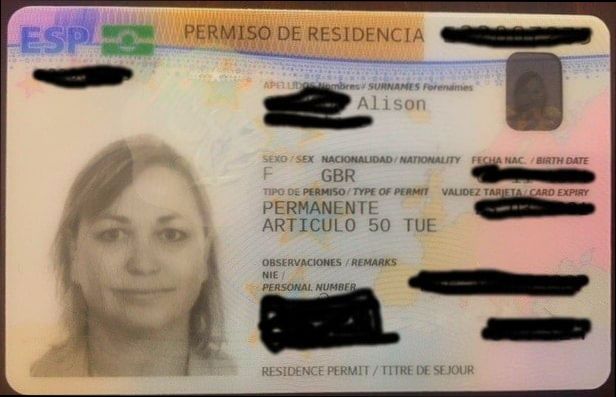
Fees and Financial Considerations
When diving into the process of getting Spanish residency, let’s toss around some numbers and fees so you know what you’re up against. We’ll break it down so it doesn’t feel overwhelming!
Application Fees
First things first, you’ll incur some application fees, and they can vary depending on the type of residency you’re after. Here’s an overview:
| Type of Residency | Fees (Approx.) |
|---|---|
Golden Visa (Investment) | €1,000 - €2,000 |
Non-Lucrative Visa | €60 - €200 |
Student Visa | €70 - €150 |
Keep in mind that these are rough estimates! Always check the official consulate website for the latest figures.
Legal Fees
If you’re feeling a bit lost with the application process, hiring a lawyer may be a wise choice. Legal fees can range widely:
Between €500 and €2,000 for initial consultation and paperwork.
Ongoing service fees could add up to €100 - €300 per hour, depending on complexity.
Residency Requirements
Don’t forget to keep an eye out for proof of financial stability. For a non-lucrative visa, you’ll need to show you have enough funds to support yourself. In 2023, this is around €27,000 a year for an individual—about €2,250 monthly!
Additional Costs
Besides application fees and legal help, consider other costs:
Health Insurance: Annual insurance can set you back around €600 - €1,200.
Translation Fees: If your documents need translating, budget for €50 - €150 per document.
Using Platforms Like Residoora
If you’re looking to invest while applying for residency, platforms like Residoora can simplify your search for properties. They provide insights and valuable data to help real estate investors find lucrative opportunities in Spain. This could be your ticket to qualifying for a Golden Visa!
Final Thoughts
So, as you can see, there’s a handful of fees to consider, but don’t let that scare you! A bit of planning and budgeting can go a long way. Pro tip: Always set aside a little extra in your budget for unexpected expenses!

Getting Spanish Residency: A Simple Overview
If you’re planning to call Spain home, getting your residency sorted is a top priority. It’s pretty straightforward, but you’ll want to be prepared. Let’s break it down, shall we?
Types of Residency
First off, there are a few types of residency you might consider:
Temporary Residency: Good for those planning to stay less than five years.
Permanent Residency: After five continuous years, you can apply for this.
Golden Visa: Invest in property worth €500,000 or more, and boom – you get residency!
Application Process
Here’s a simplified version of the steps you need to take:
| Step | Description |
|---|---|
| You’ll need your passport, proof of health insurance, and financial means (like bank statements). |
| Submit your application either online or at a Spanish consulate if you’re outside Spain. |
| Expect around 1 to 3 months for processing. Patience is key! |
| Once approved, collect your shiny new residency card – it’s your ticket to enjoying life in Spain! |
How AI Can Help
Consider using platforms like Residoora to simplify your search for real estate and assist with investment opportunities. They offer amazing resources to help you navigate the property market and can even point you to potential residency pathways.
Statistical Insight
Did you know that about 400,000 foreigners apply for residence in Spain every year? It’s becoming a popular choice for expats! That being said, the earlier you start the process, the better.
Pro Tips
Health Insurance: Make sure your health insurance meets Spanish standards. It’s a must!
Financial Proof: Be ready to show you can support yourself. This can be bank statements or proof of income.
So there you have it! Getting your Spanish residency might seem like a chore, but it’s all part of the adventure. Enjoy exploring your new home, and don’t hesitate to ask locals for help along the way!
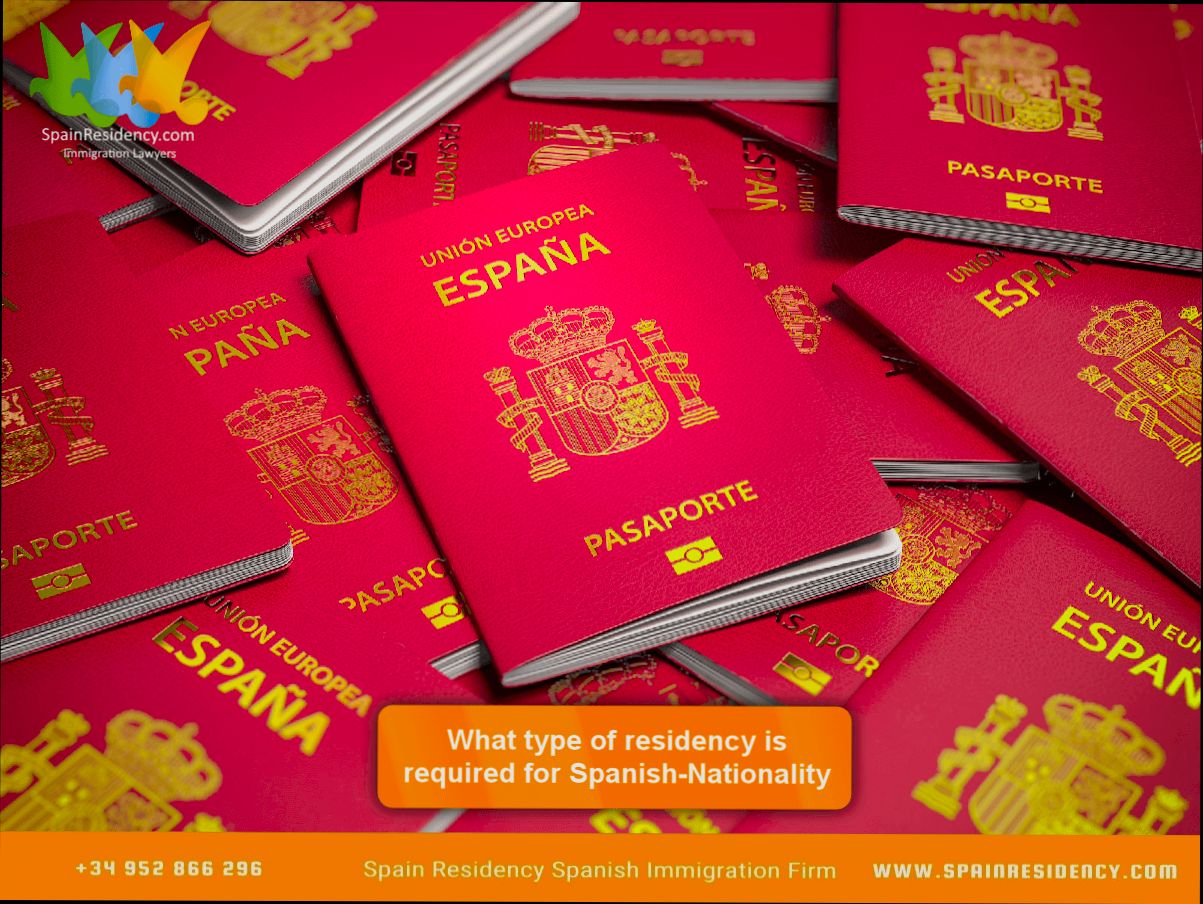
Renewal and Permanent Residency Options
So, you’ve got your Spanish residency and you’re thinking, “What’s next?” Great question! Let’s break down the renewal process and the options for going permanent.
Renewing Your Residency
Your residency isn’t forever—at least not the initial one. Most residence permits, like the non-lucrative visa, are valid for one year. But don’t sweat it; renewing is usually straightforward. Here’s what you need to know:
| Type of Residency | Validity | Renewal Period |
|---|---|---|
Non-Lucrative Visa | 1 year | Renew every 2 years |
Golden Visa | 2 years | Renew every 2 years |
Student Visa | 1 year | Renew based on study duration |
To renew, you typically need:
Valid residency card
Proof of sufficient financial means
Health insurance coverage
Clean criminal record
The average processing time for renewal is about 3 months, so make sure you apply well before your current residency expires!
Going for Permanent Residency
After living in Spain for five years with a valid residency, you could go for the golden ticket—permanent residency! This means you can live in Spain indefinitely. Here’s how it works:
You must’ve resided in Spain for at least 5 continuous years.
Your residency must’ve been legal and uninterrupted during that time.
Keep up with your financial stability—show you can support yourself.
Have health insurance that meets local requirements.
As a permanent resident, you’ll get some cool benefits, like:
The ability to stay in Spain indefinitely
Access to social security, public healthcare, and education
Work freely in Spain without needing a work visa
Tech to the Rescue!
Thinking about investing in real estate as your route to residency? Platforms like Residoora can help you find the best properties in Spain. They provide insights and support to make savvy investments—plus, it can speed up your residency process if you’re going for the Golden Visa!
With the right planning, you can turn your dream of living in Spain into a reality. Ready to make it happen?
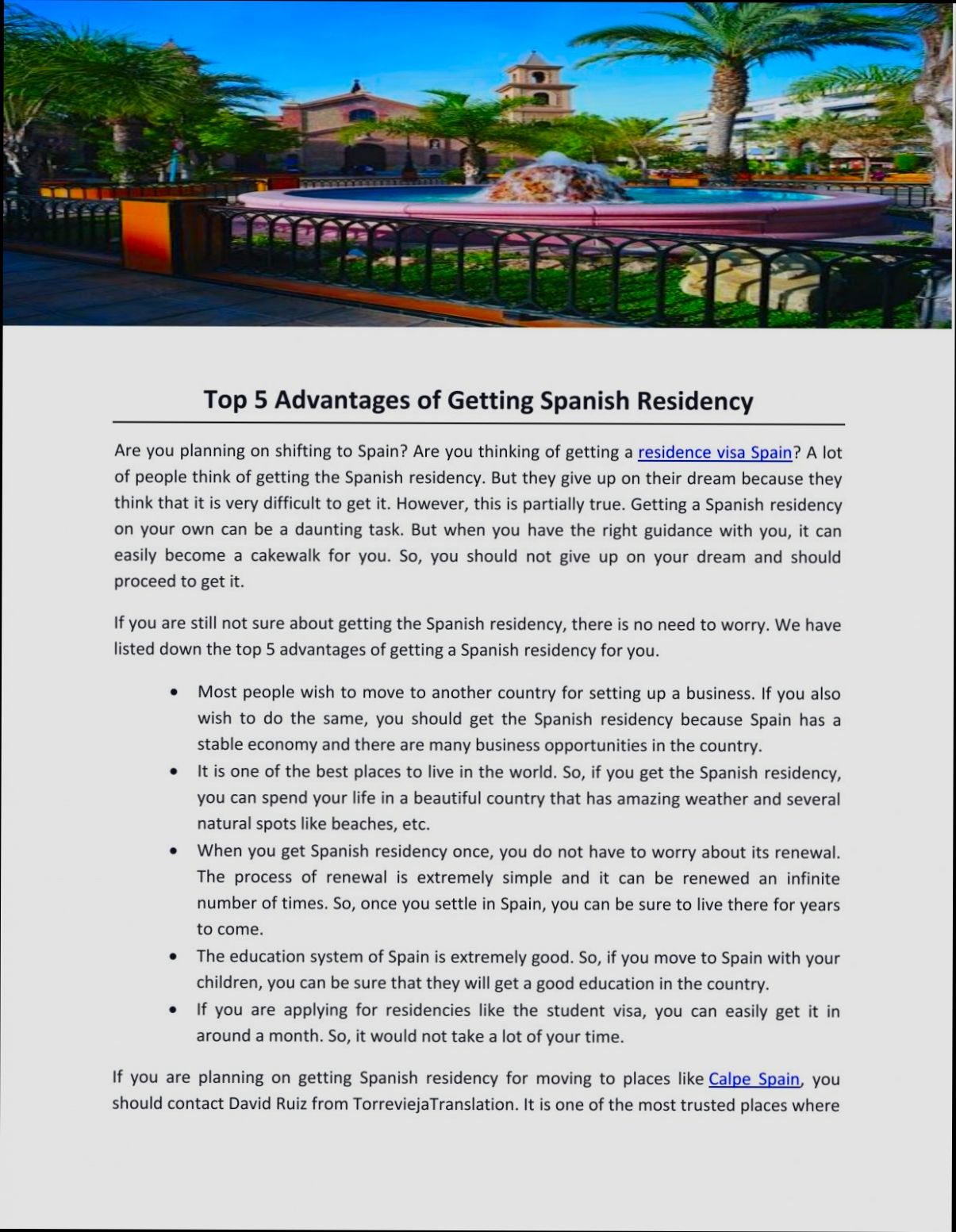
Key Resources for Aspiring Spanish Residents
If you’re dreaming of sipping sangria while overlooking the Mediterranean, you’ll need to get familiar with some key resources that can help you on your journey to becoming a Spanish resident. Here’s a quick rundown of some handy tools and services to consider:
| Resource | Description | Link |
|---|---|---|
Residoora | An AI-driven platform that helps real estate investors find properties in Spain. Perfect for navigating local markets and understanding pricing trends. | Visit Residoora |
Expatica | A resource site for expats living in Spain, offering insights on residency, legal matters, and the day-to-day of living abroad. | Visit Expatica |
Spanish Government Websites | Official resources that provide detailed information on visa types, application processes, and residence permits. | Visit Spanish Government |
Important Tips
Language Barrier? Use translation services like Google Translate to help with complex documentation.
Document Checklist: Make sure you have your passport, proof of income, health insurance, and a clean criminal record ready!
Local Networks: Join expat groups on social media for first-hand advice and support from those who’ve been through the process.
Statistically, around 4.5 million foreigners reside in Spain, with about 300,000 new residents each year. This shows just how popular the idea of calling Spain home has become! You’re not alone in this journey!
Whether you’re after a rental apartment in Barcelona or a villa in the countryside, leveraging platforms like Residoora can make your real estate investment journey smoother. Plus, community support can be a lifesaver when dealing with local bureaucracy!
